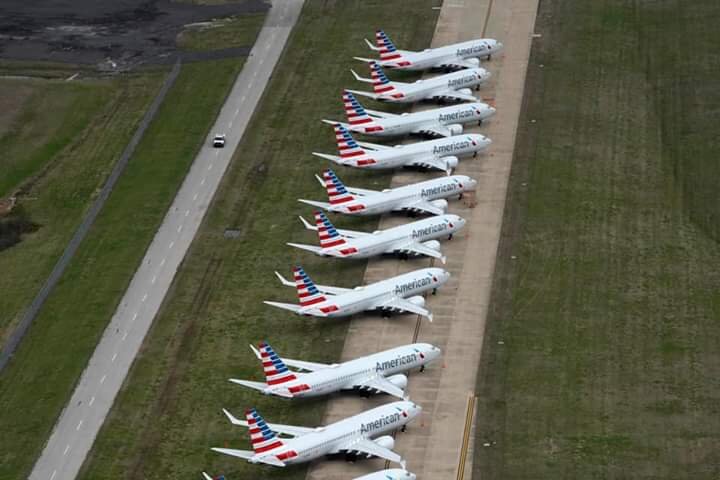Hard Landing
The blue line in the above chart from flightradar24 tells a startling story. An unprecedented decline in commercial flights is underway as Covid-19 takes its toll. The skies are starting to empty. At the time of writing, 42 airlines are in a complete shutdown, while others are in various stages of capacity reduction.
Qantas is suspending all international flights, as Cathay Pacific reduces operations by 90%. Chinese airlines are slashing international routes to operate at about 75% capacity. A few airlines, such as Qatar, for now, are maintaining the majority of services. The situation is dynamic with a host of existential factors. Details of airline statuses are here.
We are witnessing a game-changer. Many airlines will not survive in their current form; mergers or closures are inevitable. Flybe folded earlier this year, while others are close to collapse. As we don't know when the Covid-19 will stop its relentless spread, predictions for the aviation industry are foolhardy.
I don't wish to get into the political machinations of bailouts and aid in these difficult times. Governments face the unenviable task of allocating limited funds to a vast array of troubled businesses. Whether aviation is a special case, as some lobbyist claim, remains debatable. Yet, the world needs airlines and customers will return.
There are things we can see happening that should protect the core of the aviation industry, but tough decisions are needed. As regards staff, airlines are adopting various strategies. These include no-paid leave, enforced breaks and reduced hours. Should the crisis continue — which looks likely — large-scale layoffs are coming. As I mentioned in my last blog, to address security concerns, all terminations need careful management.
With thousands of planes parked, guarding will be necessary. This is straightforward and within the experience of all airlines. Even on the ground, planes need constant maintenance to keep them airworthy, placing a strain on engineering services. And while mothballing is an option, it raises a whole new set of issues. Preparing a plane for long-term storage is a complicated, time-consuming process. Moreover, with many airlines and leasing companies adopting the same blueprint, capacity is an issue. Plus, mothballing jets delays their return to service if needed.
To mitigate this situation, airlines are accelerating the retirement of older aircraft such as the MD-88 and MD-11. Also, high-cost /low-return fleets will become redundant. It may surprise the public to know that the A380, a modern jet, was the first to face a layup as airlines sought to control costs—simple economics at play. There is now speculation that this big bird may disappear from many fleets, likewise the 747.
Meanwhile, a few airlines are switching to operating passenger planes in a cargo role, leaving the seats in place. Cathay Dragon is offering such a service. Cargo demand remains the one positive and is proving the only source of income for some.
On the ground, the Covid-19 closed two control towers in recent days for cleaning. Both Chicago Midway and Las Vegas McCarran air traffic control towers had infections amongst ATC staff. Las Vegas closed for five days. This reduced ATC services, although the runways remained open with planes communicating between each other to maintain separation. The area ATC handled sequencing. This approach is not ideal but permissible. Chicago's Midway, closed on 17th March after three staff tested positive for COVID-19. Regular services resumed on 25th March. We can expect more such incidents.
The big question remains how the industry responds once Covid-19 retreats. Will demand spike as everyone rushes to travel, or will it take time for public confidence to return. No one can predict.
Plus, a rapid return to service may prove impossible with planes and crews uncertified to fly. A long layup may see pilot rating's lapse. Thus, in truth, a gradual return to full operations may be the only option.
Again, security is a factor. As planes come back to service, checks will be necessary, including thorough searches. Likewise, staff must be re-indoctrinated on security protocols after such a long break. Given that the aviation industry is complex, regulated and safety-focused, a gradual return to some form of normalcy may take time. And the industry will look different.




